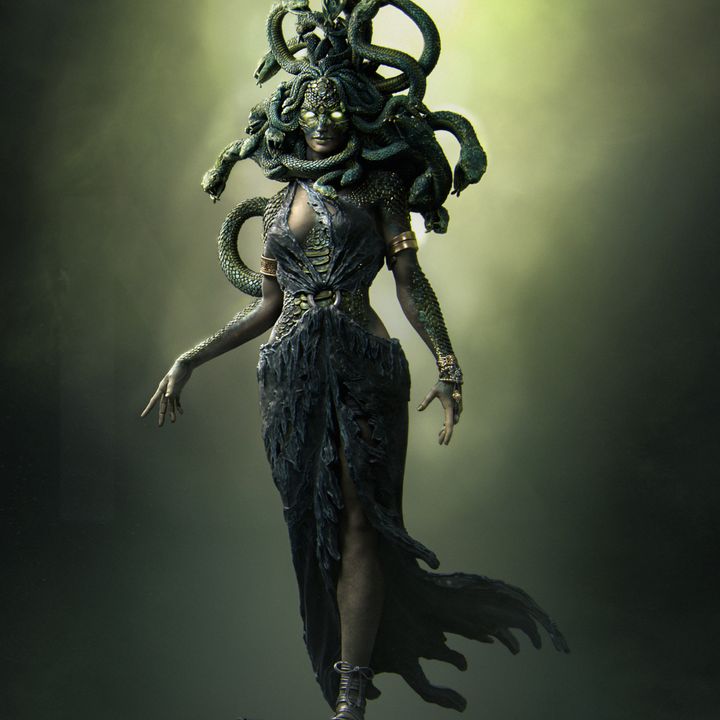“In Greek mythology, Medusa was initially a beautiful priestess of Athena who, after being violated by Poseidon in Athena’s temple, was cursed by Athena into a monstrous creature with snakes for hair and a gaze that could turn people to stone. Medusa is best known from the story of her death, brought upon her by the hero Perseus who decapitated her with the help of the gods Hermes and Athena. The earliest version of Medusa’s death is from Hesiod’s Theogony, which details her decapitation and describes her children Pegasus, the winged horse, and the great Chrysaor, who sprung from her neck. This also mentions the head of the Gorgon in Homer’s Iliad and Odyssey, which were originally part of the Greek oral tradition before being committed to writing sometime in the 8th century BCE, hint at a long history of the story of the complex character of the Gorgon Medusa.” (https://www.worldhistory.org/Medusa/)
Medusa’s story is significant because it explores the themes of female power. In turn, this is important because in most mythology the stories are based around males. So, this story being based on a female is really cool and a new perspective, even if it is under malicious circumstances.
When I was young, I learned the story of Medusa. However, I never knew how she became a gorgon, or rather, how she changed from a woman into someone with snakes for hair and could turn people to stone with a simple look. When I was 14, I became interested in mythology and would watch YouTube videos on different figures in mythology. One day I came across her story. That story has stuck with me ever since then. Up to this day, I still love mythology. I’ve watched so much of mythology and have so much of it buried into my brain.








